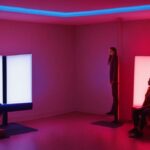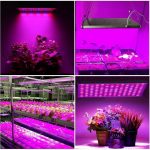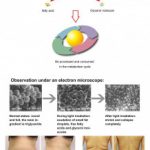Last Updated on 11 months by Francis
Light therapy has gained popularity as a possible treatment for depression. This technique involves exposure to bright light that mimics natural outdoor light, with the purpose of regulating the body’s internal clock and improving mood. Despite its widespread use, there is ongoing debate about the efficacy of light therapy for depression. In this conversation, we will explore the topic of whether or not light therapy is an effective treatment option for those living with depression.
Contents
The Science Behind Light Therapy
Light therapy, also known as phototherapy, is a non-invasive treatment that uses specific wavelengths of light to promote healing and reduce symptoms of depression. The therapy works by stimulating the production of serotonin and other neurotransmitters that regulate mood and sleep. It also regulates the circadian rhythm, the body’s internal clock that controls sleep and wake cycles.
Types of Light Therapy
There are three main types of light therapy: bright light therapy, dawn simulation, and blue light therapy. Bright light therapy involves exposure to a bright light source for a specified amount of time. Dawn simulation is a type of light therapy that mimics the natural light of sunrise, gradually increasing in intensity to help regulate sleep-wake cycles. Blue light therapy uses a specific wavelength of blue light to treat seasonal affective disorder (SAD) and other types of depression.
Effectiveness of Light Therapy for Depression
Studies have shown that light therapy can be an effective treatment for depression, particularly for those experiencing mild to moderate symptoms. It has also been found to be effective in treating SAD, a type of depression that typically occurs during the winter months due to a lack of sunlight. In fact, light therapy has been shown to be just as effective as antidepressant medication for treating SAD.
How Light Therapy Works for Depression
Serotonin and Melatonin
Light therapy works by increasing the production of serotonin and decreasing the production of melatonin. Serotonin is a neurotransmitter that regulates mood, appetite, and sleep. Melatonin is a hormone that regulates the body’s internal clock and is responsible for inducing sleep.
Circadian Rhythm
Light therapy also helps regulate the circadian rhythm, which is the body’s internal clock that controls sleep and wake cycles. Exposure to bright light in the morning can help reset the circadian rhythm, making it easier to fall asleep at night and wake up in the morning.
Pros and Cons of Light Therapy
Pros
- Non-invasive
- Few side effects
- Can be as effective as antidepressant medication
- Can be used in conjunction with other treatments
Cons
- May not work for everyone
- Can cause eye strain and headaches
- Can be expensive
- May require daily use for several weeks to see results
How Light Therapy Works for Depression
Light therapy works by increasing the production of serotonin and decreasing the production of melatonin. Serotonin is a neurotransmitter that regulates mood, appetite, and sleep. Melatonin is a hormone that regulates the body’s internal clock and is responsible for inducing sleep. Exposure to bright light can help regulate these neurotransmitters and hormones, leading to improvements in mood and sleep.
FAQs: Is Light Therapy Used for Depression?
What is light therapy?
Light therapy, also known as phototherapy, is a treatment that involves exposure to specific wavelengths of light. It is commonly used for the treatment of seasonal affective disorder (SAD) and other types of depression.
How does light therapy work for depression?
Light therapy is believed to work by impacting the circadian rhythm, a biological process that regulates sleep-wake cycles and other bodily functions. Exposure to bright light in the morning is thought to help regulate the circadian rhythm in individuals with depression, leading to improvements in mood and energy levels.
Is light therapy effective for depression?
Research suggests that light therapy can be an effective treatment for depression, particularly for individuals with seasonal affective disorder (SAD). Studies have shown that light therapy can improve mood, energy levels, and sleep quality, and may be as effective as antidepressant medication for some individuals.
Are there any side effects of light therapy?
Side effects of light therapy are generally mild and may include headaches, eye strain, and nausea. These side effects usually go away on their own or with a change in the timing, duration, or intensity of the light therapy. However, it is important to talk to a healthcare provider before starting light therapy, as it may not be suitable for everyone.
How long does light therapy take to work?
The amount of time it takes for light therapy to work for depression can vary, but most people begin to feel the effects within a few days to a few weeks of starting treatment. To achieve the best results, it is important to use the light therapy device as directed by a healthcare provider and to continue treatment for the recommended duration.

.jpg)





